philanthropists
Paul Newman
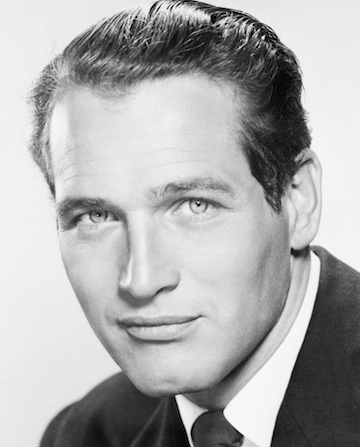
On this date in 1925, actor and philanthropist Paul Newman was born in a suburb of Cleveland, Ohio, to a Catholic mother and a Jewish father. Newman enlisted in the Naval Air Corps but his service was cut short due to color blindness. He served in the Navy in the South Pacific during World War II. Upon his return from the war, Newman enrolled at Kenyon College, Ohio, and received his B.A. in 1949.
He worked in summer stock, married Jackie Witte, with whom he had three children, enrolled at the Yale University grad program in acting, then left it for Broadway. His first Broadway success was playing the lead in “Picnic” (1953). Newman was admitted to the Actor’s Studio, studying “method” acting. His first film, “The Silver Chalice,” came out in 1954 and was a flop. His breakthrough role was portraying boxer Rocky Graziano in “Somebody Up There Likes Me” (1956). He met actress Joanne Woodward while making “The Long, Hot Summer” (1957) and married her in 1958. They had three daughters.
Newman was nominated often for “best actor” Oscars for such movie classics as: “Cat on a Hot Tin Roof” (1958), “The Hustler” (1961), “Hud” (1963) and “Cool Hand Luke” (1967). He won for “The Color of Money” (1987). Other films include “Butch Cassidy and the Sundance Kid” and “The Sting,” in which he was paired with Robert Redford.
Newman founded “Newman’s Own” line of food, donating much of the proceeds to charity. Newman was listed on the website of the Unitarian Universalists, which is creedless, as one of its famous members. According to Who’s Who in Hell, edited by Warren Allen Smith, Newman once told TV interviewer Barbara Walters that he didn’t believe in an afterlife. (D. 2008)
“Although never overtly religious, Newman said he chose to think of himself as Jewish because it was ‘more challenging.’ “
— Associated Press obituary (Sept. 27, 2008)
Albert Gallatin
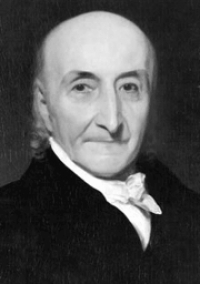
On this date in 1761, Albert Gallatin (né Abraham Alfonse Albert Gallatin) was born in Geneva, Switzerland. He studied mathematics, natural history and Latin at Geneva University, where he graduated with honors in 1779. Voltaire had been a friend of his grandmother and was an influence on Gallatin, also a deist. In 1780, to evade family pressure to join up with the Hessians, Gallatin gave up family and fortune to emigrate to America to demonstrate “a love for independence in the freest country of the universe.”
He taught French at Harvard, then moved to Virginia in 1785, where he was elected to the legislature. After being elected to the U.S. Senate, Gallatin was rejected by the body as a non-citizen, but returned to Congress in the House in 1795. He wrote “Views of the Public Debt, Receipts & Expenditures of the U.S.” in 1800, which is described by the U.S. Department of the Treasury website as “still a classic” analysis of the fiscal operations of government under the Constitution.
Jefferson believed the Alien and Sedition Act was framed to drive Gallatin — who worked to keep down expenses, especially for war and the military — from office. Jefferson offered Gallatin the position of secretary of state. He served under both Jefferson and Madison from 1801-13. He was minister to France from 1815-23, then served as an envoy to Great Britain. A lifelong scholar, he was a co-founder of New York University.
Determined to keep it secular, he later resigned from a position there when “a certain portion of the clergy had obtained control.” Gallatin opposed slavery and helped negotiate the Treaty of Ghent, ending the War of 1812. He served with the American Ethnological Society, helping to preserve native languages, and was president of the New York Historical Society. (D. 1849)
"[A] foundation free from the influence of clergy."
— Gallatin's stated aim for New York University, cited by Joseph McCabe, "A Biographical Dictionary of Modern Rationalists" (1920)
J.B. Stallo
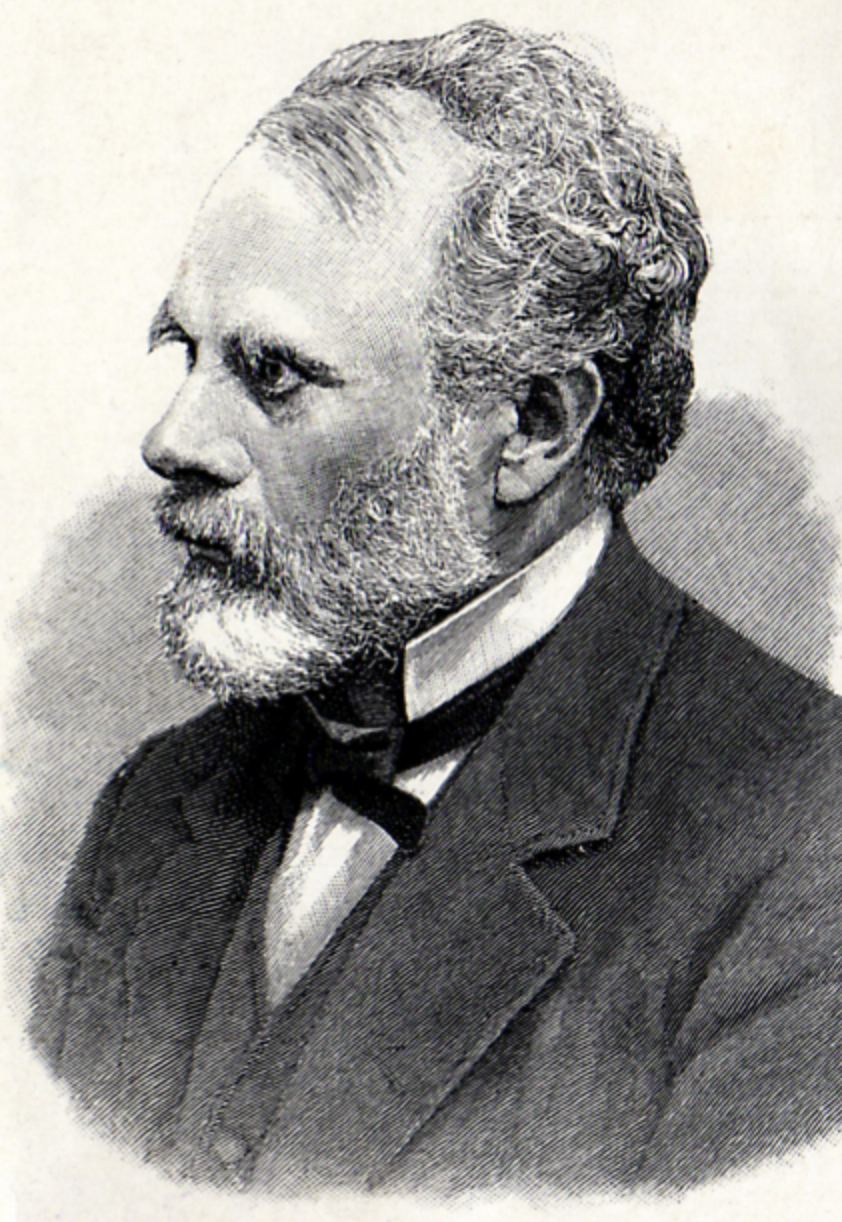
On this date in 1823, Johann Bernard Stallo, academic, religious dissenter, jurist, political philosopher and ambassador, was born in the Catholic village of Damme in Germany. He studied at home, as well as at a Catholic school. Since his family could not afford to send him to a gymnasium (a secondary school with an emphasis on preparing students for higher education), Stallo emigrated to the United States in 1839. He settled in Cincinnati, close to extended family, and met his wife Helena Zimmerman in 1850. The couple had 10 children, five of which survived childhood.
Stallo taught at numerous Jesuit institutions until he was admitted to the bar and began practicing law in 1849. Contradicting his involvement in religious schools, he played a critical role in the Cincinnati Bible War, a longstanding local “war” between Protestants, Catholics and Jews over the role of religion in their public schools (specifically whether or not the King James version of the bible should be used as reading material in classrooms). The decision by the board of education against using the bible paved the way for secularization in numerous other school districts.
Stallo also participated in the Liberal Republican movement of 1872, organized to oppose the reelection of President Ulysses S. Grant and his supporters. Before he retired to Florence, Italy, Stallo’s most famous works were published, such as The Concepts and Theories of Modern Physics (1882), which represents some of the early thought that led to the modern philosophy of science. (D. 1900)
PHOTO: Portrait of Stallo from the frontispiece of “The Concepts and Theories of Modern Physics.”
"Government can protect and help to maintain religion, as well as everything else which constitutes the life of the soul, only in one way — by guarding the freedom of its development. Whoever asks it to do more is seeking to convert it into an abominable engine of tyranny and oppression."
— Stallo, "State creeds and their modern apostles," lecture delivered in the First Congregational Unitarian Church, Cincinnati (April 3, 1870)
Elton John
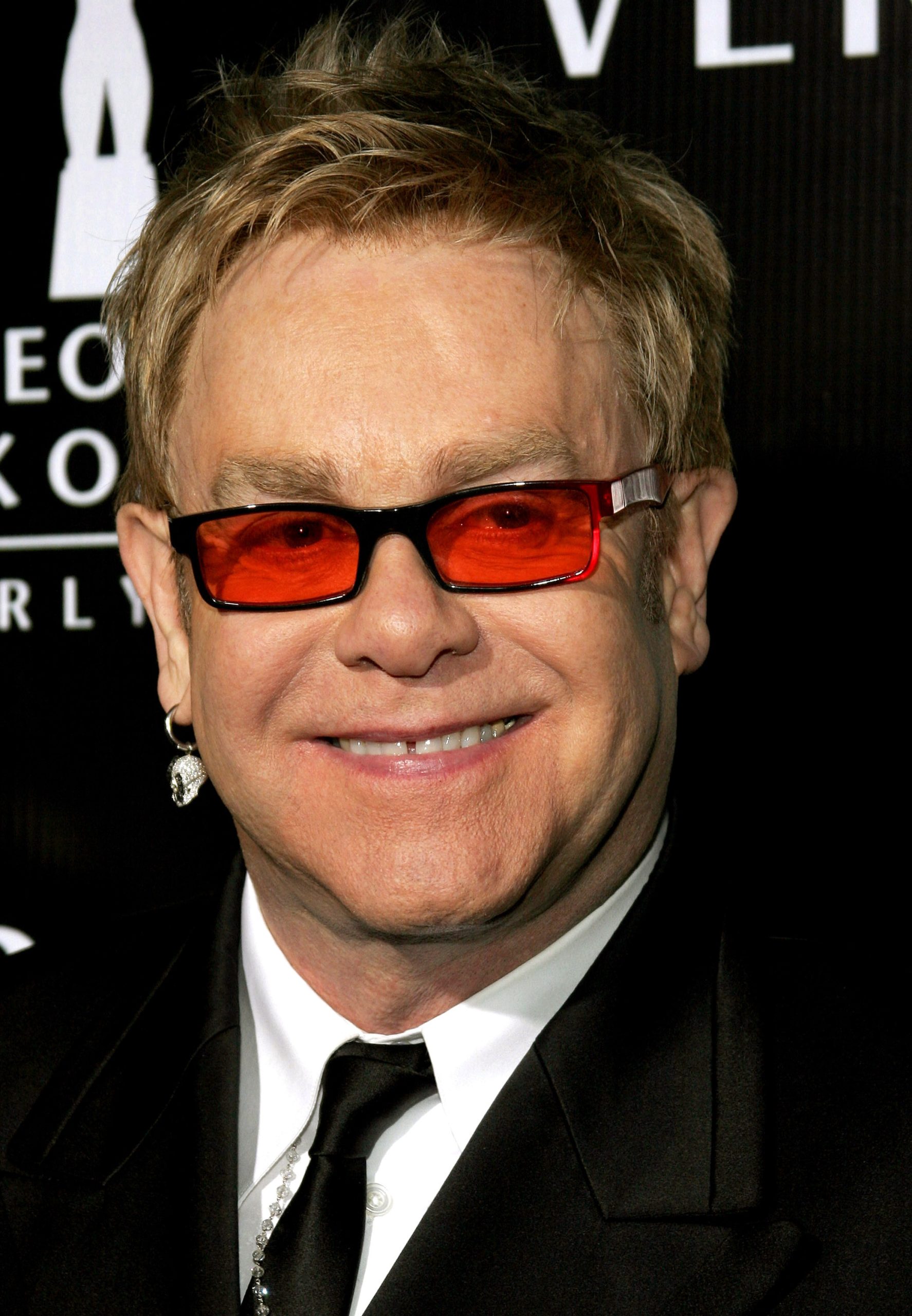
On this date in 1947, Elton John (né Reginald Kenneth Dwight) was born in Pinner, England. By age 4 was playing piano and reportedly could play any melody he heard. He dropped out of the Royal Academy of Music in London in 1961 to form his first band, Bluesology, which performed Ray Charles and Jim Reeves ballads, among others. He acquired his stage name from two of the musicians in Bluesology, Long John Baldry and Elton Dean.
After leaving Bluesology in 1966, he met Bernie Taupin, a lyricist with whom he would form a lifelong musical partnership. According to John’s website, Taupin could write lyrics in less than an hour and John would compose the music in half an hour. They have collaborated on more than 30 albums. John has sold more than 300 million records, making him one of the world’s best-selling artists.
His first major hit, “Your Song,” made the U.S. Top Ten charts in 1970. He went on to have other major hits, including “Rocket Man” (1972) and “Honky Cat” (1972). He created Rocket Records in 1974, the label under which he released the hits “Daniel” and “Crocodile Rock.” In that same year he collaborated with his friend John Lennon at Lennon’s final public concert in Madison Square Garden. Deemed the most successful pop artist of the 1970s, he often released at least two albums a year.
The singer battled bulimia and drug and alcohol addictions in the 1970s and 1980s. Just as his popularity waned, his band experienced a comeback at a free concert they hosted in Central Park. He produced chart-toppers in the 1980s such as “I Guess That’s Why They Call It the Blues” (1983) and “I’m Still Standing” (1983). He experienced a health scare in the late 1980s with potentially cancerous nodules affecting his vocal cords. This brush with illness helped convince him to take care of his health, fight off his addictions and become a generous philanthropist. In 1993 he formed the Elton John AIDS Foundation.
His domestic relationship with David Furnish, a former advertising executive and current filmmaker, started in 1993. They were married in 2014 and have two sons, Zachary and Elijah, born to a surrogate mother.
He was inducted into the Rock and Roll Hall of Fame in 1994, wrote songs for “The Lion King” and won an Academy Award for the “Lion King” song “Can You Feel the Love Tonight.” He won Tony Awards for his work on the theatrical productions of “The Lion King” (1998) and “Aida” (2000). His single, “Candle in the Wind,” honoring the tragic death of his friend Princess Diana, broke all records, and he donated proceeds to Diana’s favorite charities.
As an “out” gay man, he rejects organized religion largely because “religion has always tried to turn hatred toward gay people. Religion promotes the hatred and spite against gays.” (Observer Monthly magazine, November 2006.) He was knighted in 1998 by Queen Elizabeth II for his contributions to music and fundraising for AIDS.
"From my point of view, I would ban religion completely. The reality is that organized religion doesn’t seem to work. It turns people into hateful lemmings and it’s not really compassionate."
— Elton John, Observer Music Monthly interview (November 2006)
Barbara Leigh Smith Bodichon
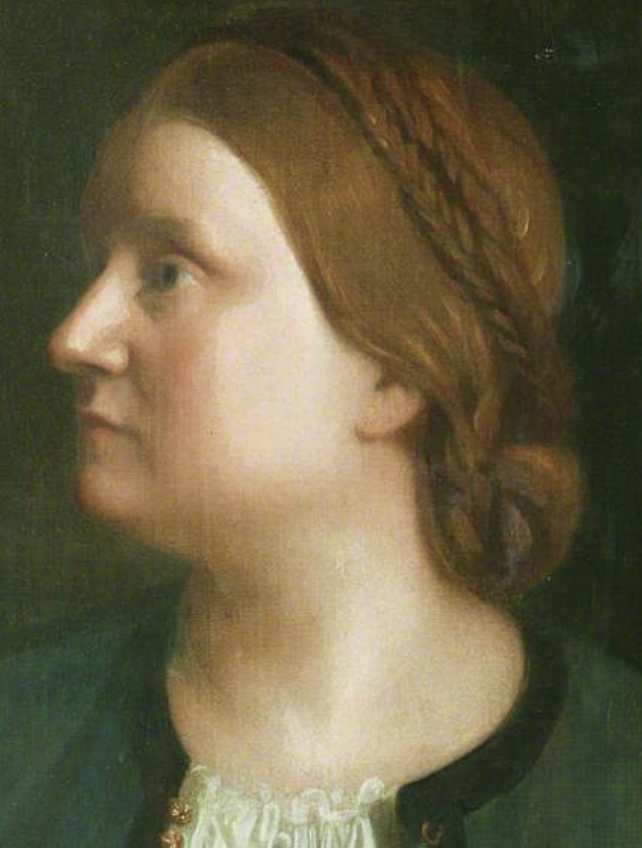
On this date in 1827, Barbara Leigh Smith (later Bodichon) was born in England. Her father was a dissenter, Universalist and benefactor to the poor. He had five children with a young milliner whom he never married, possibly out of principle. Barbara’s working class mother died young. The children grew up in an egalitarian home and Barbara received an inheritance at 21, just like her brothers. No college admitted women at the time, but she and a female friend took an unprecedented walking tour of Europe unchaperoned.
Barbara was a lifelong friend of novelist and freethinker George Eliot, who modeled “Romola” after her, and associated with many artists and intellectuals, including freethinker G.J. Holyoake. Barbara’s cousin Florence Nightingale snubbed her, evidently because of her “illegitimate” status. In 1854 she wrote a summary of laws concerning women, which became a major catalyst of the British feminist movement and resulted in the adoption of the Married Women’s Property Bill in 1857. She also petitioned Parliament for suffrage and was instrumental in the founding of Girton College in 1869, which admitted women. D. 1891.
“There was hardly a scheme for the furtherance of women's interests that did not bear the imprint of her driving aspirations. The only exception lay in projects sponsored by any branch of Christianity, for though she was not an atheist she had her own reasons for keeping her distance from organised religion. 'Ah! If you were only like Miss Barbara Smith!' Dante Gabriel Rossetti wrote to his pious and retiring sister Christina.”
— Literary critic Dinah Birch, commenting on Bodichon, London Review of Books (October 1998)
Henry “Hank” Zumach
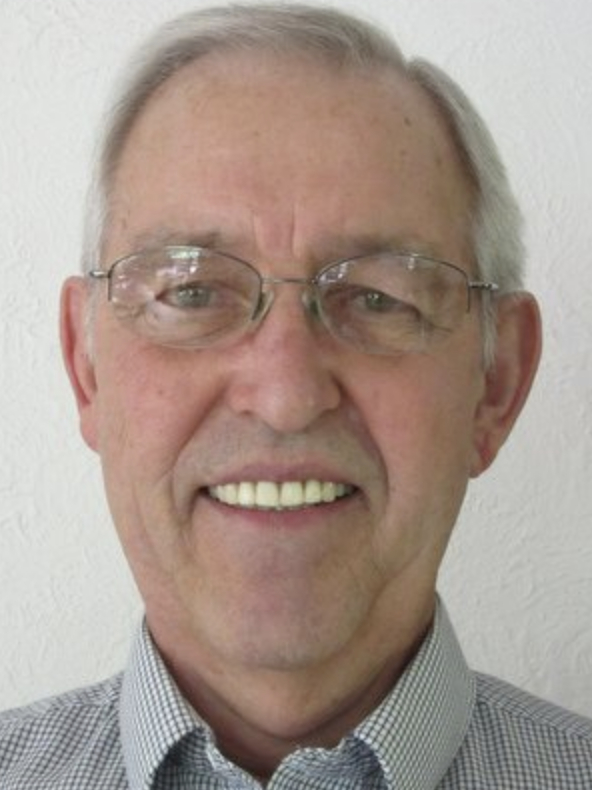
On this date in 1942, freethought activist Henry Herman “Hank” Zumach was born in La Crosse, Wisconsin, to Henry P. Zumach and Ann Katherine (Roraff) Zumach. With only fourth grade and sixth grade educations, both parents managed to attain lower level management positions. His mother was a practicing Catholic and his father was agnostic. Zumach grew up in the La Crosse area and attended Catholic schools for five years, starting in the fourth grade. (Due to his high IQ scores, he was allowed to skip fifth grade.) His parents allowed him to attend public high school after he decided that he could not believe the parochial school’s religious teachings.
Married and with two children, in 1965 he graduated from the University of Wisconsin-La Crosse with majors in psychology and business administration. His working career included human resources management for two large industrial companies, then teaching industrial safety laws, then starting and owning a residential roofing company. He retired in 1997. Zumach served in the U.S. Marine Corps Reserves from 1959 to 1965.
While he’d long been supportive of state-church separation and his doubts about religion started when he was about 12, it was after he retired that Zumach decided to become more involved when he saw a news story in the La Crosse Tribune about a local couple helping the Freedom From Religion Foundation sue the city for allowing a Ten Commandments monument in a city park. The husband had died and his wife, Sue Mercier, felt unable to continue as the sole plaintiff, so Zumach started making phone calls and convinced 21 others to join the suit. “I accepted the role of spokesperson for the plaintiffs and the lawsuit became the largest Tribune story two years in a row.”
While U.S. District Judge Barbara Crabb ruled in favor of the plaintiffs in 2003, despite the city’s sale of the small piece of land containing the monument to a private fraternal group, she was overturned in 2005 by an appeals court. The court, however, did not dispute the part of Crabb’s ruling that display or ownership of the Ten Commandments by the city was unconstitutional. A dissenting appellate judge called the land sale a “sham” bordering on “fraud.”
Zumach co-founded the La Crosse Area Freethought Society in 2008, eventually arranging for members to write monthly columns on secular topics for the La Crosse Tribune, which published them for six years. He retired as its president in 2016. In 2015, working with the American Humanist Association, he established the Henry Zumach Award for Freedom From Fundamentalist Religion to recognize individuals and groups that have taken a stand against religious intolerance and bigotry.
The first recipient was the French satire magazine Charlie Hebdo that was attacked by Muslim extremists for publishing cartoons of the prophet Muhammad. The Freedom From Religion Foundation, in consultation with the benefactor, now oversees and administers the annual award (recipients here). It was instituted at $10,000 but was later set at 5 percent of the endowment. By 2022 the award had grown to $35,000.
Zumach was the recipient of an FFRF special award in 2016 as a Freethought Extraordinaire. He lives in La Crosse with his longtime domestic partner, Betty Hammond, and has a son, Todd, and a daughter, Kelly.
“I gradually came to realize that many of the things I was taught during five years attending Catholic schools did not make any logical sense, and were, in fact, contrary to the basic teaching of ‘treat others as you want to be treated.’ “
— Zumach speech to FFRF's 39th annual convention, Pittsburgh (Oct. 8, 2016)
Stephen Girard
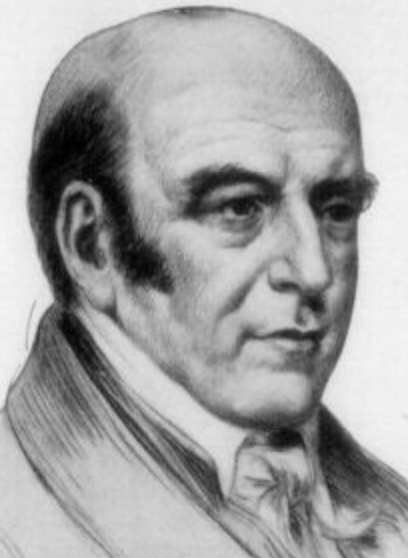
On this date in 1750, Stephen Girard was born in Bordeaux, France. The freethinking philanthropist, who settled in Philadelphia in 1776, liked to say he started life with a sixpence. When he died he was the wealthiest man in America.
Girard went to sea as a cabin boy before he was 14 and worked his way up to commander. He opened a store in his adopted city, then became a ship owner and banker. During the yellow fever outbreak in 1793, when half the residents fled, Girard became a hero. He not only opened his pocketbook to help but volunteered as nurse and hospital manager for two months, working directly with the sick and dying.
Girard, an arch-critic of clergy and Christianity, though he donated to individual churches, named his sailing ships after freethinkers such as Voltaire. Biographer Stephen Simpson wrote that “his opinions were atheistical” and that Girard “utterly disbelieved in all modes of a future existence, and who rejected with inward contempt every formulary of religion, as idle, vain, and unmeaning.”
He left nearly his entire estate, valued at $7.5 million, to charity. He willed more than $5 million for the construction and endowment of a college for orphans, instructing that there should be no sectarian control or instruction (see quote below). Writing in 1894 in Four Hundred Years of Freethought, Samuel Putnam noted the school had about 1,500 students but that Girard’s provisions had been “shamefully violated.” (D. 1831)
"I enjoin and require that no ecclesiastic, missionary, or minister of any sect whatever shall ever hold or exercise any station or duty whatever in the said college; nor shall any such person ever be admitted for any purpose, or as a visitor, within the premises appropriated to the purpose of the said college."
— Girard's bequest terms in endowing a college for orphans, "Biography of Stephen Girard, with his Will Affixed" by Stephen Simpson (1832)
Sam Simon
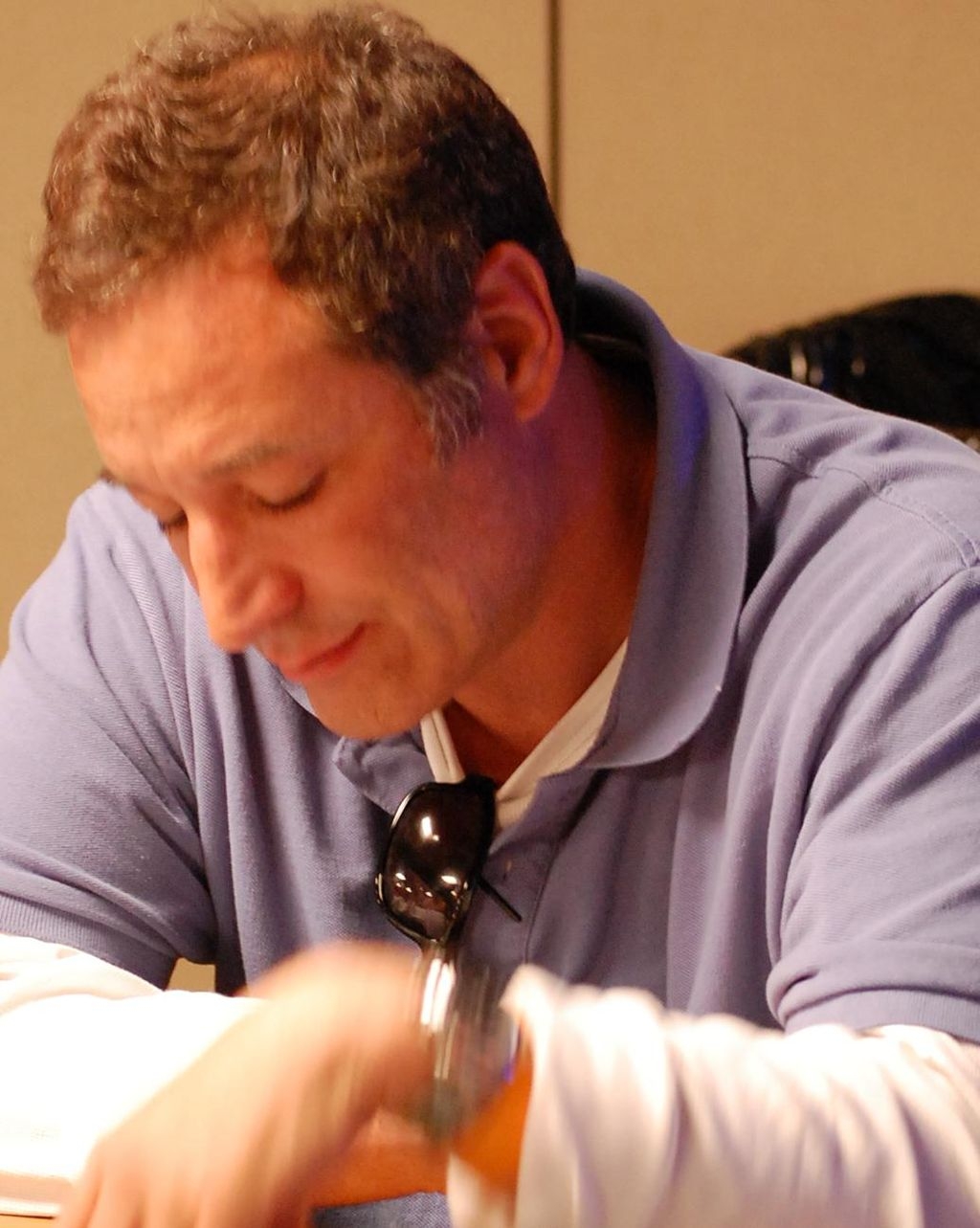
On this date in 1955, atheist philanthropist Samuel Michael “Sam” Simon, most noted as co-creator of the television series “The Simpsons,” was born in Los Angeles. His father, of Estonian Jewish heritage, became wealthy manufacturing affordable clothing. After graduating from Stanford University, Simon worked as a newspaper cartoonist and storyboard artist before contributing in various roles to “The Drew Carey Show,” “Taxi” and “Cheers.” In 1989, Simon developed “The Simpsons” with Matt Groening and James L. Brooks. He left the show in 1993 but not before negotiating a deal in which he received millions from annual show revenues. (As of this writing in 2016, his name still rolls with the credits.)
After a 2012 diagnosis of advanced colorectal cancer, he announced he would donate nearly all his $100 million fortune to various charities, many of which he supported during his lifetime. Twice divorced, he was childless. His bequests included the Sam Simon Foundation (with programs for service dogs for veterans and the hearing impaired), PETA, Save the Children and the Sea Shepherd Conservation Society, a global marine conservation organization. D. March 8, 2015.
Photo (cropped) by Matt Waldron under CC 2.0.
"I'm an atheist, but there's a thing called tithing that a lot of religions do. Ten percent was the minimum you were supposed to give to charity every year. And I always outdid that.”
" ‘People say I'm trying to buy my way into heaven, which I don't believe in. So that can't be true,’ Sam says. He paid for those atheist billboards that make news from time to time. Like the one by the Lincoln Tunnel, in New York, that read, IT'S A MYTH, on a picture of the stars over Bethlehem.”— Vanity Fair, Sept. 30, 2014
Pearl S. Buck
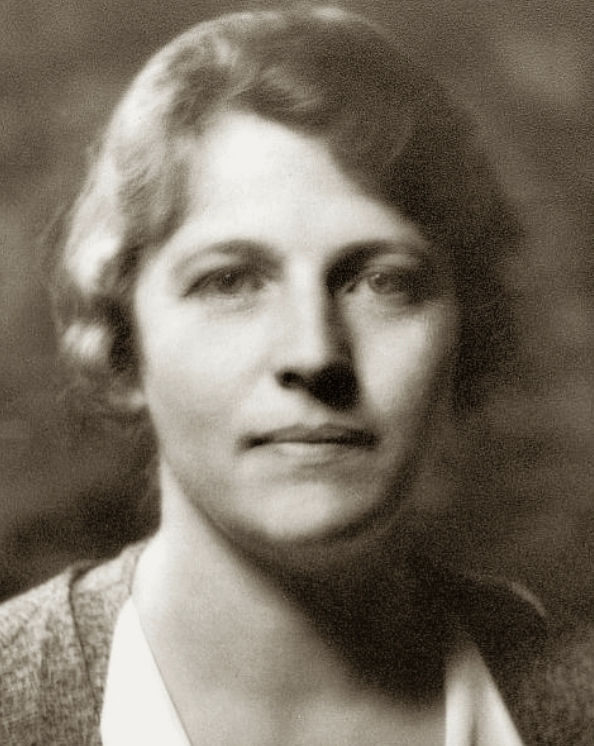
On this day in 1892, Pearl S. Buck (née Pearl Comfort Sydenstricker) was born in West Virginia to parents who were missionaries in China for the Southern Presbyterian Church. At 3 months old she moved with them to China, where she lived for the next 40 years except to attend college. She was fourth of seven children, but only one of three to survive to adulthood.
She attended a women’s college in Virginia for four years and in 1917 married John Lossing Buck, an agricultural economist living in China. They lived in a rural province, which became the inspiration for The Good Earth, her 1931 best-seller, which won the Pulitzer Prize.
The couple had a baby in 1921, which was born with phenylketonuria and was intellectually challenged. Buck had a hysterectomy when a tumor was found during the delivery. They adopted a child and taught at Nanking University. She started writing for The Nation, Atlantic Monthly and other publications. Her first novel was East Wind, West Wind. She moved back to the U.S. permanently in 1934, settling in Green Hills Farm, Pa. Her publisher, Richard Walsh, became her second husband in 1935 and they adopted six children.
Despite writing 70 books she found time to devote to civil rights and women’s rights. She was routinely published in the NAACP’s magazine Crisis and by the Urban League. She was a 20-year trustee of Howard University and founded East and West Association to improve relations between the U.S. and Asia. She also founded the first international interracial adoption agency, Welcome House, in 1949, placing more than 5,000 children in homes. In 1964, she started the Pearl S. Buck Foundation to help Amerasian children. (D. 1973)
PHOTO: Buck c. 1932; public domain photo by Arnold Genthe.
"Like Confucius of old, I am so absorbed in the wonder of earth and the life upon it that I cannot think of heaven and the angels.""It may be that religion is dead, and if it is, we had better know it and set ourselves to try to discover other sources of moral strength before it is too late."
— Buck, "Advice to Unborn Novelists" (1949); "What America Means to Me" (1947)
George Soros

On this date in 1930, George Soros (né György Schwartz), entrepreneur, philanthropist and social activist, was born to upper-middle-class, nonobservant Jewish parents in Budapest, Hungary. The family changed its surname to Soros in 1936 because Jews were being persecuted. He lived through the Nazi occupation that resulted in the murder of over 500,000 Hungarian Jews and posed as a teen as Christian to escape detection.
After the establishment of a communist government under Soviet hegemony after World War II, he fled to England in 1947 to attend the London School of Economics, where he earned bachelor’s and advanced degrees in philosophy.
He worked for a merchant bank in London before emigrating in 1956 to New York City, where he began working in finance and investment and securities analysis. He developed the theory of reflexivity, which posits that market values are driven by the fallible ideas of participants as well as economic fundamentals. He launched the Soros Fund Management in 1970, a hedge fund that eventually made him a multi-billionaire.
He started the Open Society Foundations in 1979, supporting democracy, human rights and economic development in over 120 countries. In 2017 he announced he had transferred $18 billion of his fortune into an endowment to fund future work of the Foundations, bringing his total giving to the Foundations since 1984 to over $32 billion. He has also heavily supported liberal and progressive causes and political candidates, making him a convenient target for conservatives and the Religious Right.
Soros has written 14 books, including Underwriting Democracy (1991), The Bubble of American Supremacy: Correcting the Misuse of American Power (2004), The Crash of 2008 and What it Means (2009) and The Tragedy of the European Union: Disintegration or Revival? (2014). Soros was twice divorced with five children when he married Tamiko Bolton in 2013, a Japanese-American businesswoman 42 years his junior.
Among the FAQs (frequently asked questions) on his website is “What faith is George Soros?” It’s answered like this: “He identifies himself as an atheist.” About his views on religion: Soros “respects all faiths and religious practices. He believes that people of faith and faith communities contribute to the public’s understanding of pressing social issues and often add a principled, moral aspect to debates that are too often dominated by politicians, statistics and polling.”
PHOTO: Soros in 2011 in Munich, Germany; Harald Dettenborn photo.
STEVE KROFT: Are you religious?
GEORGE SOROS: No.
KROFT: Do you believe in God?
SOROS: No.— Interview on CBS "60 Minutes" (Dec. 20, 1998)
Robert Redford
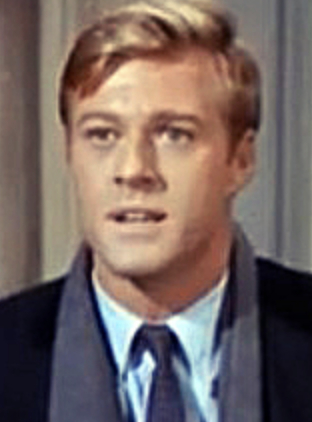
On this date in 1936, Charles Robert Redford Jr., who would become an iconic actor, director, producer, environmentalist, entrepreneur and philanthropist, was born in Santa Monica, Calif. “Growing up in a working-class world in Los Angeles, I had no luxuries or entertainment. I was ashamed to have people come to our house,” he told Playboy in November 2007. He had some youthful run-ins that lost him a baseball scholarship at the University of Colorado in 1957.
As a student at the American Academy of Dramatic Art in New York, he made his stage debut in the comedy “Tall Story.” His movie debut was “War Hunt” (1962). He starred in “Barefoot in the Park” on Broadway in 1962, finding fame after reprising that role on screen five years later. His role in “Inside Daisy Clover” (1965) won him a Golden Globe for the best new star.
Playing the Sundance Kid in “Butch Cassidy and the Sundance Kid” (1969) was considered his breakthrough role, also bringing him a lifelong friendship with Paul Newman. Next were “The Way We Were” (1973), “The Sting” (1973) and “All the President’s Men” (1976). Other memorable roles included “This Property Is Condemned” (1966), “Downhill Racer” (1969), “The Candidate” (1972) and “Three Days of the Condor” (1975).
He has also directed a number of films, including “Ordinary People” (1980), which won him a directorial Academy Award, “A River Runs Through It” (1992), “Quiz Show” (1994), “The Horse Whisperer,” “The Conspirator” (2011) and “The Company You Keep” (2012). More-recent movies included “All is Lost” (2013), in which he was the sole performer, and a turn as Bill Bryson in “A Walk in the Woods” (2015).
He made a cameo appearance in 2019’s “Avengers: Endgame,” in which he reprised his role from 2014’s “Captain America.” “Avengers” replaced “Avatar” as the highest-grossing film of all time. In July 2019 it was announced that he would come out of retirement to play President Robert Redford, a fictionalized version of himself, in the HBO drama series “Watchmen.”
Redford has used his celebrity to further environmental and progressive causes, founding the Sundance Film Festival and the Sundance Film Institute in Utah for independent filmmakers, as well as Sundance Cinemas. He married Lola Van Wagenen in 1958, which ended in divorce in 1985. Their children are Amy (1970), James (1962), Shauna (1960) and Scott (1959, who died shortly after birth). Redford married German painter Sibylle Szaggars in 2009.
His honors include an award from the Kennedy Center (2005), The American National Medal of Arts (1969) and the 2002 Oscars Lifetime Achievement Award.
PHOTO: Redford in the film “Barefoot in the Park” in 1967.
PLAYBOY: Do you believe in an afterlife?
REDFORD: I’m not sure I do. I’ve explored every religion, some very deeply, enough to know there’s not one philosophy that can satisfy me. Problems can’t be solved with one way of thinking. If anything is my guide, nature is. That’s where my spirituality is. I don’t believe in organized religion, because I don’t believe people should be organized in how they think, in what they believe. That has never been driven home as hard as with the [Bush] administration. When somebody thinks God speaks to him, you’ve got trouble. If God is speaking to the president, he’s speaking with a forked tongue, because the behavior of this administration doesn’t seem very godlike or spiritual. … Is there an afterlife? As far as I know, this is it. It’s all we've got. You take your opportunities and you go for it.— Redford, Playboy interview (November 2007)
Jane Addams
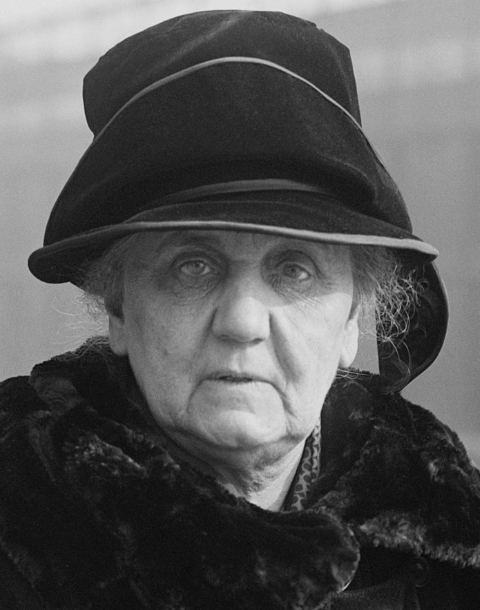
On this date in 1860, Jane Addams was born, the eighth child of a prosperous family in Cedarville, Ill. Her mother died while pregnant when Addams was 2. Her businessman father, Quaker by conviction but not affiliation, served for many years in the state Senate. Addams entered Rockford Female Seminary at age 17, intending to pursue a medical career.
Her plans changed after she developed health problems of her own and her father died from appendicitis while vacationing with his second wife at a Green Bay hotel. She inherited $50,000 in 1881, a considerable sum at the time.
She and classmate Ellen Gate Starr, with whom she had a romantic relationship, opened a settlement home in Chicago in 1889, expanding services for the working-class poor to include a girls’ home, nursery and other amenities. Hull House was secular by Addams’ decree. She documented social conditions, worked with reformers and radicals of every stripe and wrote articles on everything from suffrage to prostitution.
She co-founded the Woman’s Peace Party in 1915 and was elected national chair. It eventually became the Women’s International League for Peace and Freedom. She was intimately involved with the founding of sociology as an academic field in the U.S. The Jane Addams College of Social Work is a professional school at the University of Illinois in Chicago.
Addams won the Nobel Peace Prize in 1931. Although she credited Jesus in her address, “A Challenge to the Contemporary Church,” she denounced the church fathers very firmly in it: “The very word woman in the writings of the church fathers stood for the basest temptations.” While she remained a member of a Presbyterian church, Addams regularly attended and sometimes lectured at Unitarian and Ethical Society events and had a close relationship with members of the Jewish community.
Addams had a long domestic partnership with Mary Rozet Smith, who was wealthy and supported Addams’ work at Hull House and elsewhere. They were together for 40 years until 1934, when Smith died of pneumonia. Addams, who suffered a heart attack in 1926, died of cancer in 1935.
"A wise man has told us that ‘men are once for all so made that they prefer a rational world to believe in and live in.’ "
— Addams, "Twenty Years at Hull-House" (1912)
Bob Geldof
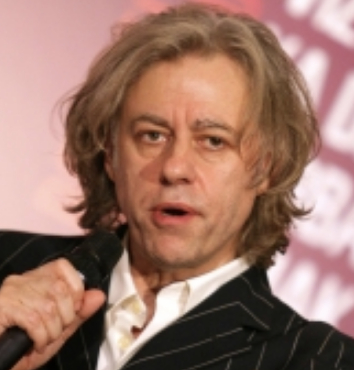
On this date in 1951, Robert Frederick Zenon Geldof was born in Dun Laoghaire, Ireland. He attended Blackrock College and became a music journalist for Georgia Straight in Vancouver, B.C., after graduation. Returning to Ireland, he became the lead singer of the punk rock band the Boomtown Rats (1975–86), known for the songs “I Don’t Like Mondays” (1979), “Rat Trap” (1978) and “Up All Night” (1981).
In 1986 he went solo and published his autobiography Is That It?. He portrayed Pink in “The Wall” (1982), based on Pink Floyd’s album. He married journalist Payla Yates in 1986 and the couple had three children: Fifi, born in 1983, Peaches, born in 1989, and Pixie, born in 1990. They divorced after Yates left him for INXS lead singer Michael Hutchence, who committed suicide in 1997. Yates died of a drug and alcohol overdose in 2000. Peaches died of a heroin overdose in 2014.
Geldof is a philanthropist and anti-poverty activist. In 1984 he formed the musical group Band Aid, which raised $8 million to aid Ethiopia. Geldof also helped organize the Live Aid concerts in 1985, which raised over $150 million to combat African famine. He followed with the Live 8 concerts in 2005 featuring over 1,000 musicians. He was elected a member of the Commission for Africa in 2004, received a Lifetime Achievement Award at the 2005 Brit Awards for his musical accomplishments, was nominated for the Nobel Peace Prize three times and was knighted in 1986.
When asked in an Independent article (July 10, 2006) if he was a saint or a sinner, Geldof replied, “Being an atheist I can’t be either.” In a 2011 interview with the Manchester Jewish Telegraph, he explained: “I was a quarter Catholic, a quarter Protestant, a quarter Jewish and a quarter nothing — the nothing won.”
After several successful business ventures, he formed the private equity firm 8 Miles in 2008, investing solely in Africa and domiciled on the Indian Ocean island of Mauritius. The firm has come under criticism for operating out of a country seen as a tax haven instead of locating in Africa.
"I actively disliked the Church and its institutionalized morality which I felt bedeviled Ireland."
— Geldof in his autobiography "Is That It?" (1986)
Andrew Carnegie
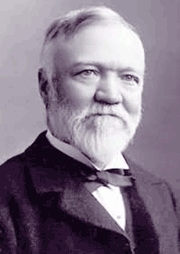
On this date in 1835, tycoon turned philanthropist Andrew Carnegie was born in Dumfermline, Scotland. In 1848 he traveled with his family to Allegheny, Pa. He entered the workforce at 13 as a bobbin boy in a cotton mill, worked at Western Union and the Pennsylvania Railroad, then founded the Keystone Bridge Works and the Union Iron Works in Pittsburgh. In his book The Gospel of Wealth (1899), he proposed that the rich are obligated to give away their fortunes.
He began his philanthropy in his 30s, first endowing his native town, and eventually establishing seven philanthropic and educational corporations. His principal desire was to promote free public libraries. When he started that campaign in 1881, they were scarce in the U.S. His $56 million built 2,509 libraries. By the time of his death he had given away more than $350 million.
Carnegie rejected Christianity and sectarianism and was delighted to replace those views with evolution: “Not only had I got rid of the theology and the supernatural, but I had found the truth of evolution,” he wrote in his 1920 autobiography, published the year after his death. After encountering missionaries on a voyage to the Pacific, Carnegie wrote humorously in his diary that he would “never forgive” the missionary for a particularly ridiculous sermon. When applied to for money by those same missionaries to China, Carnegie wrote them: “I think that money spent upon foreign missions for China is not only money misspent, but that we do a grievous wrong to the Chinese by trying to force our religion upon them against their wishes.” (Carnegie to Ella J. Newton, Foochow, China, Nov. 26, 1895)
His attitude toward religion softened later in life when he attended a Presbyterian church pastored by Social Gospel exponent Henry Sloane Coffin and had a brief correspondence with the eldest son of the founder of the Bahá’í faith.
He did not want to marry during his mother’s lifetime. After she died in 1886, the 51-year-old Carnegie married Louise Whitfield, 21 years his junior. They had their only child in 1897, a daughter named after his mother Margaret. He died at age 83 of bronchial pneumonia at his estate in Lenox, Mass. (D. 1919)
"The whole scheme of Christian Salvation is diabolical as revealed by the creeds. An angry God, imagine such a creator of the universe. Angry at what he knew was coming and was himself responsible for. Then he sets himself about to beget a son, in order that the child should beg him to forgive the Sinner. This however he cannot or will not do. He must punish somebody — so the son offers himself up & our creator punishes the innocent youth, never heard of before — for the guilty and became reconciled to us. … I decline to accept Salvation from such a fiend."
— 1905 Carnegie letter to Sir James Donaldson of St. Andrews University, cited by Joseph Frazier Wall in "Andrew Carnegie" (1970)
Annie Lennox

On this date in 1954, musician and philanthropist Ann “Annie” Lennox was born in Aberdeen, Scotland, to Dorothy and Thomas Lennox. She showed an early talent for music and won a place at the Royal Academy of Music in London when she was 17. There she met guitarist David Stewart. They were both involved in a band called The Tourists but left to form the synth-pop band the Eurythmics in 1980.
The Eurythmics released hit singles throughout the 1980s, including “Sweet Dreams (Are Made of This),” “Would I Lie to You?” and “Here Comes the Rain Again,” selling 75 million albums worldwide.
In 1990 Lennox split from Stewart to launch a solo career. She released the album “Diva,” which included the immensely popular single, “Walking On Broken Glass,” and sold six million copies. In 1995 she released the album “Medusa,” featuring the Grammy-winning single “No More I Love Yous.”
Lennox has won four Grammys as of 2019. In 2004 she won the Academy Award for Best Song for “Into the West” from the film “The Lord of the Rings: The Return of the King,” co-written with Fran Walsh and Howard Shore. Lennox performed the song live at the 76th Academy Awards. The song also won a Grammy and a Golden Globe.
Lennox has also won numerous humanitarian awards for her efforts in raising both money and awareness for the HIV/AIDS epidemic. In 2012 she married her third husband, Mitch Besser. He is an American gynecologist and founder of the HIV/AIDS preventing program Mother2Mother. She was married to German Hare Krishna devotee Radha Raman from 1984-85. She was married to Uri Frutchman, an Israeli film and record producer, from 1988 until their divorce in 2000. They have two daughters, Lola and Tali.
Lennox is not religious and told the Wall Street Journal in December 2010 that she’s “best described as agnostic.” She strongly criticized Pope Benedict XVI in 2009: “If there was ever an example of irresponsibility, it’s the Pope going to Angola, where people are dying because of unprotected sex, and telling them they should abstain. What planet is this person on?”
"So many wars and strife are borne out of opposing religious views. If people don't have kindness, respect, tolerance, and compassion at the core of their beliefs, then their religion is pointless."
— Lennox interview, Scottish Daily Record (Oct. 24, 2010)
